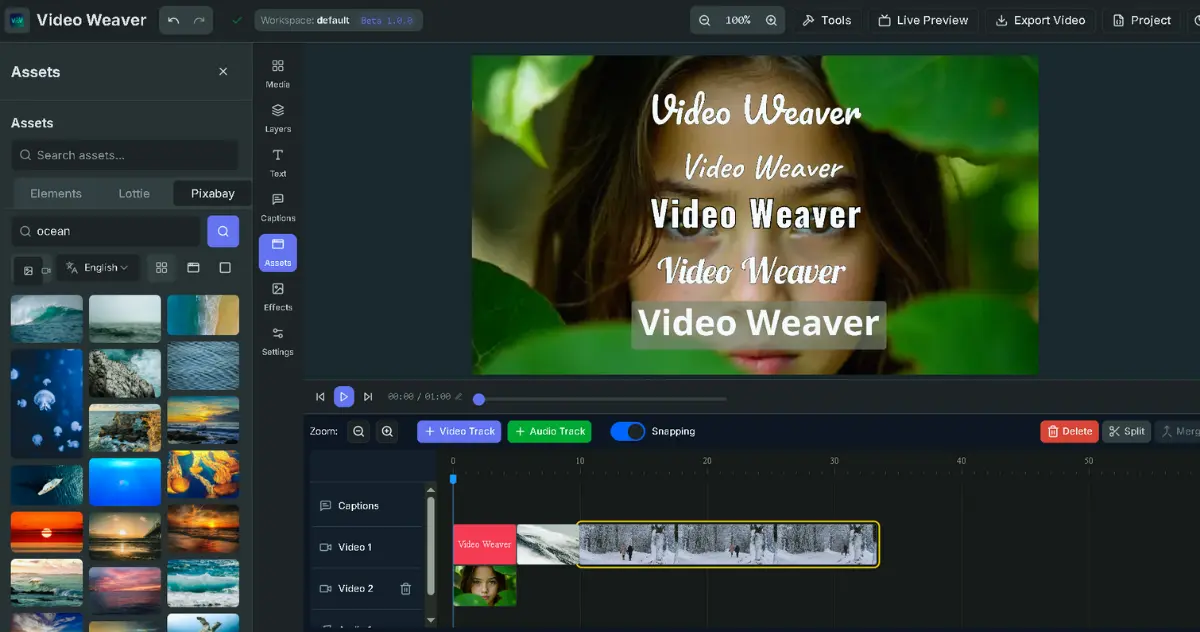BAAI Introduces Emu3.5: A Multimodal World Model That Challenges Gemini 2.5 with Both Speed and Performance
Explore the latest release from the Beijing Academy of Artificial Intelligence (BAAI), Emu3.5, a powerful multimodal world model that not only surpasses competitors in image generation and editing but also achieves a 20x inference acceleration through innovative DiDA technology. Learn how it is changing our interaction with the digital world.
In the wave of artificial intelligence, the development of multimodal models has always been a focus of attention. Just recently, the Beijing Academy of Artificial Intelligence (BAAI) dropped a bombshell, officially launching a large multimodal world model named Emu3.5. This is not just a technological update, but more like a profound preview of the future of human-computer interaction.
The core concept of Emu3.5 is quite intuitive: directly predict the next “visual-language” step, thereby achieving smooth and seamless world construction and content creation. Imagine an AI that no longer passively responds to commands, but can predict and lay out the next plot like a visionary director.
A Master of “Next Step” Prediction Trained on Trillions of Data Points
The power of Emu3.5 is no accident. Behind it is a massive training dataset of over 10 trillion mixed visual-language tokens from countless video frames and texts. What’s more special is that it adopts a unified “next-token prediction” objective, allowing the model to process images and text as naturally as thinking about the same thing.
And that’s not all. To make Emu3.5 more than just a “memory master,” the research team also introduced reinforcement learning (RL) technology. This move allows the model to learn better thinking and concept integration capabilities, making it smarter and more logical when facing complex tasks.
DiDA Technology: The Secret Weapon for a 20x Speed Boost
If you’ve always felt that the speed of AI-generated content is a bit slow, then the changes brought by Emu3.5 might surprise you. One of its key new features is Discrete Diffusion Adaptation (DiDA).
This may sound a bit complicated, but its effect is very direct: without sacrificing any generation quality, it increases the inference speed by a full 20 times through bidirectional parallel prediction! What does this mean? A complex image edit that used to take a minute to wait for may now only take a few seconds. This leap in speed undoubtedly opens up new possibilities for real-time creation and interactive applications.
The Data Speaks for Itself: Emu3.5 Excels in Multiple Benchmarks
Of course, the release of any model must be backed by performance. Judging from the official data charts, the performance of Emu3.5 is indeed impressive.

In the comparison in Figure (a) above, Emu3.5 (purple bar) performs on par with the industry’s top Qwen-Image/Edit model in several image generation and editing benchmarks such as LongText-Bench, LeX-Bench, and CVTG-2K, and even slightly better in some items, and significantly better than GPT-Image-1 and Google’s Nano Banana.
Head-to-Head: A Clear Victory Over Google’s Nano Banana
What’s more interesting is the direct confrontation between Emu3.5 and Google Gemini 2.5 Flash Image (codenamed Nano Banana). As can be seen from the win rate pie chart in Figure (b) below, Emu3.5 has the upper hand in four key areas:
- World Exploration: A win rate of up to 65.5%. This indicates that the model has outstanding capabilities in understanding and navigating virtual environments.
- Embodied Manipulation: The win rate is even higher at 67.1%, showing its potential in simulating real-world physical interactions.
- Visual Guidance: A win rate of 51.5%.
- Visual Narrative: The win rate is also close to half, at 49.2%.
These data clearly show that Emu3.5 is not just a simple image generator; it demonstrates a deeper level of ability in understanding and predicting the dynamic world.
Not Just Generating Pictures, but an Actor in the Real World
Another major highlight of Emu3.5 is its built-in multimodal input and output capabilities. This allows it to easily handle complex sequences mixed with vision and text, making it well-suited for tasks that require long-term coherent creation (such as generating a series of illustrations based on a story) or real-world robot operations.
This also explains why it performs so well in tasks such as “Embodied Manipulation” that simulate robot actions. A model that can predict the next step naturally has more potential to become an excellent “actor.”
Future Outlook and Resources
In summary, the release of Emu3.5 has set a new benchmark for the multimodal AI field. It not only keeps pace with top models in terms of performance, but also solves the pain point of generation speed through innovative DiDA technology, while demonstrating huge potential in simulating real-world interactions.
For developers and researchers, this is undoubtedly exciting news. The team has released related resources, and interested friends can go and explore:
- GitHub: https://github.com/baaivision/Emu3.5
- Hugging Face: https://huggingface.co/collections/BAAI/emu35 (The page currently shows “Coming soon,” which is worth paying attention to!)
Frequently Asked Questions (FAQ)
Q1: What is the biggest difference between Emu3.5 and other models (such as Gemini)?
The biggest difference of Emu3.5 lies in its innovative DiDA technology, which increases the inference speed by 20 times without sacrificing quality, which is a huge advantage in real-time applications. In addition, as a “world model,” its original design intention is to better predict continuous visual-language steps, which gives it more potential in tasks such as long-term creation and simulation of physical interactions.
Q2: What is a “world model”? It sounds very sci-fi.
Simply put, a “world model” is an AI that not only learns patterns in data, but also tries to understand the internal rules and physical laws of an environment (whether real or virtual). Through this understanding, it can predict “what will happen next if I do this,” which makes it superior to traditional models in planning, reasoning, and interacting with the environment.
Q3: Is DiDA technology really that powerful?
Yes. In the field of AI generation, speed and quality are often difficult to have both. Many acceleration technologies can lead to loss of detail or a decrease in the quality of the finished product. DiDA technology can achieve a 20x acceleration while maintaining high-quality output, which is a major breakthrough in engineering and greatly expands the practical scenarios of this type of model.




